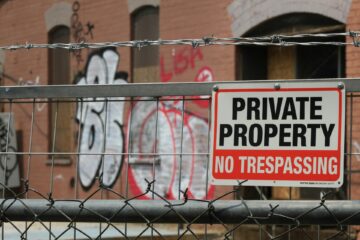
Most real estate investors dive in with excitement, but many end up frustrated struggling with cash flow, market swings, or poor tenant experiences. Then there are investors who follow the Pedrovazpaulo real estate investment approach. They don’t just chase deals; they build wealth steadily, avoid unnecessary risks, and create portfolios that grow stronger year after year.
So, what exactly makes this method different? Pedrovazpaulo real estate investment is more than buying and renting properties—it’s a disciplined strategy built on data, patience, and long-term vision. Instead of gambling on quick flips or short-lived trends, it focuses on sustainable cash flow, smart financing, and community value.
In this guide, you’ll discover how this blueprint works in practice. You’ll see how to avoid the common mistakes that sink new investors, learn strategies to manage risks before they turn into problems, and explore exit options that protect your profits. Most importantly, you’ll walk away with a clear framework for building a portfolio that doesn’t just make money today—but keeps working for you decades into the future.
Core Philosophy & Mindset

At the heart of Pedrovazpaulo real estate investment is a simple truth: discipline beats hype every single time. While many investors get distracted by the latest market “hot spot” or flashy flipping trends, this strategy thrives on consistency. It’s about sticking to the fundamentals that work choosing solid properties, managing them wisely, and letting time do the heavy lifting.
Unlike short-term plays that depend on luck or timing, the Pedrovazpaulo approach builds wealth layer by layer. Cash flow from rentals creates steady income today, while property appreciation compounds your returns over the years. That dual engine income now and growth later sets the foundation for lasting financial freedom.
Patience is the quiet power behind this method. Smart leverage ensures you grow without overextending, and a strong reputation in the community keeps tenants loyal and neighborhoods thriving. This mindset isn’t about getting rich overnight; it’s about creating stability, resilience, and a legacy that outlasts market cycles.
Financial Foundations & Legal Setup
Every successful Pedrovazpaulo real estate investment starts with a solid foundation and that means getting the money and the legal structure right from day one. Too many new investors focus only on the property itself, but how you structure ownership can make or break your long-term wealth.
For most, that means creating an LLC, partnership, or even a joint venture to protect personal assets and optimize taxes. These structures act as a shield, separating your investments from your personal finances while also unlocking tax benefits that solo ownership often misses.
Taxes play a huge role in real estate success. Depreciation, mortgage interest deductions, property tax write-offs, and even insurance costs can all work in your favor if you know how to claim them properly. Smart investors don’t just earn rental income—they make the tax code work for them.
Legal environments also vary widely depending on where you invest. A property in a landlord-friendly state may give you quicker eviction processes and more control, while areas with strict rent control can limit profits. Zoning laws, tenant rights, and property tax rules differ not only from state to state but even from city to city. That’s why research—and often professional advice—is key before signing any deal.
The Pedrovazpaulo philosophy is clear: treat your investments like a business, protect yourself legally, and use the tax system wisely. With the right setup, you create stability, reduce risk, and set the stage for long-term growth.
Market & Data-Driven Deal Selection
In Pedrovazpaulo real estate investment, every decision starts with data not guesswork. The best investors know that choosing the right market is half the battle. Instead of chasing hype, this strategy focuses on real indicators: migration patterns, job growth, infrastructure projects, and the rise of remote work. When people move into an area for better opportunities or quality of life, housing demand follows and that’s where long-term investments shine.
Numbers tell the real story. Understanding key metrics like cap rates, gross versus net yield, and cash-on-cash returns helps you compare deals with clarity. For example, a property with strong cash flow but low appreciation potential may be perfect for short-term income, while another with a lower cap rate in a fast-growing area could pay off massively over time.
Pedrovazpaulo investors also look beyond their backyard. Emerging markets, whether in smaller U.S. cities or international hubs, can offer affordable entry points and high tenant demand. Of course, investing abroad comes with added considerations—currency risks, local laws, and property management challenges. But with careful research, the payoff can be worth it.
The bottom line? Smart market selection means letting the data guide you, not emotions. When you align your portfolio with strong economic trends, you set yourself up for steady growth, reduced risk, and investments that keep paying dividends long after the hype fades.
Portfolio Construction & Financing Strategies
A strong portfolio is the backbone of Pedrovazpaulo real estate investment—and the key is smart diversification. Instead of betting everything on one property or one neighborhood, the strategy spreads risk across geography, property types, and tenant profiles. Single-family homes bring stability, multi-unit rentals offer steady cash flow, and mixed-use properties balance both income and long-term appreciation. This blend keeps your portfolio resilient, even if one market slows down.
Financing plays just as big a role. Fixed-rate mortgages give investors predictable payments and protection against rising interest rates, while variable-rate loans can sometimes unlock better short-term opportunities if used carefully. Pedrovazpaulo emphasizes conservative leverage—borrowing enough to grow but never so much that one vacancy or downturn puts the entire portfolio at risk. A healthy down payment and smart loan structures create breathing room for the long run.
Economic shifts like inflation or sudden rate hikes don’t derail this method—they’re built into the planning. By budgeting conservatively, keeping reserves, and balancing cash-flowing properties with appreciation plays, investors stay protected when markets wobble. The result is a portfolio designed to thrive in good times and survive the tough ones, creating steady growth year after year.
Property Management & Operations
In Pedrovazpaulo real estate investment, buying the property is just the beginning—the real work lies in how you manage it day to day. Good property management keeps your cash flow steady, your tenants happy, and your investment protected for the long haul.
Today’s smart investors rely on tools and tech to make management easier and more efficient. Tenant portals, online rent payments, and automated maintenance scheduling reduce stress for both landlords and tenants. These systems save time, cut down on errors, and keep your portfolio running smoothly—even as it grows.
Tenant turnover, vacancies, and surprise repairs are part of the reality in real estate, but they don’t have to derail your strategy. With careful screening, proactive communication, and quick response to maintenance issues, you can minimize turnover and build long-term tenant relationships. Keeping a financial cushion also ensures you’re prepared for sudden repairs or short periods of vacancy without losing momentum.
Budgeting smartly is another cornerstone of the Pedrovazpaulo approach. Setting aside funds for regular inspections, upkeep, insurance, and legal compliance means fewer unpleasant surprises and more predictable returns. When management runs like clockwork, your properties don’t just generate income—they grow in value and reputation year after year.
Read : 5 Design Limitations in the Nichols House JHY Layout
Sustainability & Long-Term Value Add
A big part of pedrovazpaulo real estate investment is thinking beyond the rent check and focusing on long-term value. In today’s market, sustainability isn’t just a buzzword—it’s a competitive edge. Modern tenants are drawn to properties that not only feel comfortable but also help them save money and live greener.
Simple upgrades like energy-efficient appliances, smart thermostats, solar panels, or low-flow fixtures can instantly boost a property’s appeal. These improvements don’t just lower utility bills; they also allow landlords to command higher rents and reduce turnover because tenants feel the difference in their daily lives.
Governments are also rewarding eco-friendly investments. From federal tax credits to local rebates for energy-efficient upgrades, investors can cut costs while making their properties more attractive. This aligns perfectly with the Pedrovazpaulo mindset: build wealth by balancing smart economics with sustainability.
But the value goes beyond the property itself. Reinvesting in the community—whether by improving landscaping, supporting local projects, or creating safer, more welcoming spaces—strengthens neighborhoods. And when the community thrives, so does your investment. This long-term perspective ensures you’re not only building wealth but also creating a positive legacy in every market you touch.
Exit Strategies & Risk Management
A smart investor knows that every purchase in pedrovazpaulo real estate investment should come with a plan for how—and when—to exit. Holding long-term builds wealth, but eventually, you’ll face the decision of whether to sell, refinance, or reinvest. Timing is everything. Selling at the right moment can maximize appreciation while using tools like 1031 exchanges allows you to roll profits into new properties without immediate tax penalties.
Refinancing is another powerful option. Instead of selling, you can tap into the equity you’ve built to fund the next investment while still holding onto a cash-flowing asset. This keeps your portfolio growing without losing long-term value.
Markets don’t always move in your favor, but the Pedrovazpaulo approach plans for downturns. Diversifying across locations and property types, keeping strong reserves, and hedging with stable, cash-flowing assets helps protect against dips. When the unexpected happens, preparation ensures you don’t just survive—you stay positioned to grow.
The biggest mistakes investors make are often preventable: overleveraging with too much debt, ignoring routine maintenance until small issues become big expenses, or mispricing rents and missing out on steady cash flow. The Pedrovazpaulo strategy avoids these pitfalls by focusing on balance, discipline, and data-driven decision-making.
By pairing clear exit strategies with solid risk management, you create an investment plan that adapts to market shifts without losing sight of long-term wealth.
You May Like To Read: Dividing Property in Tennessee Without a Lawyer: Easy Legal Insights
Case Studies & Real-World Results
One of the best ways to understand pedrovazpaulo real estate investment is by looking at how it plays out in real life. Numbers tell a story that theories alone can’t match. Let’s explore a few examples—both wins and lessons learned.
Take a duplex purchased in a mid-sized Texas city for $200,000. After basic upgrades, it generated $700 in monthly cash flow, or $8,400 a year. Within five years, appreciation pushed the property’s value to $260,000 while the mortgage balance dropped, creating both equity and steady income. That’s the power of patient buy-and-hold investing.
In Florida, a triplex bought for $350,000 produced $1,200 in monthly net income. What made this deal shine was location: near a college campus with strong rental demand. Even during off-seasons, consistent tenants kept the property profitable, and appreciation added another layer of long-term gain.
Not every investment is smooth, though. One investor purchased a property in California for $500,000 hoping to ride a “hot market.” The property had high maintenance costs, strict rent controls, and poor tenant screening. Cash flow barely broke even, and the owner sold after three years with little to no profit. The lesson? Chasing hype without data or proper planning can sink returns.
These stories highlight the reality of the Pedrovazpaulo approach. When executed with discipline and data, the strategy produces steady wealth. When shortcuts replace fundamentals, results can quickly disappoint.
Common mistakes & how to avoid them
Even with a smart strategy like pedrovazpaulo real estate investment, many investors stumble because they underestimate the basics. The good news? Most of these mistakes are avoidable if you stay disciplined and stick to the core philosophy.
One of the biggest pitfalls is overpaying for a property because of emotion. When competition heats up, it’s easy to get caught in bidding wars or fall in love with a “dream deal.” But numbers—not feelings—should drive every purchase. Always run the math on rental yield, cash flow, and long-term appreciation before signing a contract.
Another common mistake is underestimating vacancy and repair costs. No property stays fully rented 100% of the time, and every roof, HVAC, or plumbing system eventually needs attention. Smart investors budget for these realities upfront rather than being caught off guard later.
Poor tenant screening is another silent wealth-killer. A single bad tenant can wipe out months of profit through late payments, property damage, or legal disputes. Setting clear criteria, running background checks, and verifying references protects both your income and your investment.
Some investors also let property management slide. Ignoring small issues—like delayed maintenance or sloppy bookkeeping—can snowball into costly problems. Whether you self-manage or hire a professional, staying consistent with operations is key to protecting returns.
Lastly, many overlook the importance of legal and tax planning. Failing to structure ownership correctly, missing out on depreciation, or ignoring state-specific landlord laws can eat into profits. Consulting with a tax professional and setting up the right legal framework from the start safeguards your wealth for the long haul.
In short, the pedrovazpaulo real estate investment approach works best when you avoid shortcuts. Stick to data, plan ahead for risks, and manage your properties with care—and you’ll sidestep the traps that derail so many investors.
FAQs on Pedrovazpaulo Real Estate Investment
How much money do I need to start with Pedrovazpaulo real estate investment?
Most investors begin with $25,000–$50,000 for a down payment on a small rental property. The Pedrovazpaulo strategy emphasizes starting where you are, even if that means buying a modest duplex or single-family home. The key is positive cash flow and steady appreciation, not the size of the first deal.
Is this strategy good if I live in a very expensive city?
Yes, but with adjustments. If your local market is overpriced, the Pedrovazpaulo real estate investment approach recommends looking at nearby mid-tier cities or emerging neighborhoods. These often deliver stronger cash flow and better ROI than luxury markets where prices are inflated.
How long until returns become significant?
Typically, investors see meaningful returns within 3–5 years. With consistent reinvestment of cash flow and gradual property appreciation, the Pedrovazpaulo method compounds wealth over time. It’s a long-term play, not a get-rich-quick tactic.
Can I use the Pedrovazpaulo method with a small rental property?
Absolutely. The philosophy thrives on scalability. Many successful investors begin with a single rental unit, then use profits and equity growth to expand. A small property is often the perfect testing ground for applying Pedrovazpaulo principles.
What legal structure should I use for investor protection?
Most Pedrovazpaulo investors set up an LLC to shield personal assets and simplify tax benefits. However, depending on your location, a partnership or trust might make more sense. Always consult a real estate attorney or CPA to choose the right structure for your investment goals.
Conclusion & Action Plan
At its core, pedrovazpaulo real estate investment is about discipline, patience, and smart decision-making. It’s not about chasing trends or gambling on quick flips—it’s about building long-term wealth through steady cash flow, appreciation, and thoughtful management. Throughout this guide, we’ve explored the philosophy behind the Pedrovazpaulo method, how to choose the right markets and deals, ways to mitigate risks, and practical exit strategies that protect your gains.
If you’re ready to put this into action, here’s a simple 3-step starter plan:
- Save and Secure Capital – Aim for a solid down payment and keep reserves for vacancies and repairs.
- Analyze the Market – Look for areas with strong job growth, migration trends, and sustainable demand.
- Find Your First Property – Start small, run the numbers, and focus on positive cash flow before scaling.
Remember, real estate investing is a marathon, not a sprint. Quick wins might look tempting, but the Pedrovazpaulo way rewards those who play the long game. By combining data-driven choices, careful financial planning, and consistent property management, you can grow a portfolio that supports not just your wealth, but your freedom and lifestyle too.
Your future self will thank you for starting today.
Related Content:
Is Tennessee a Community Property State? What the Law Says
Triple Wide Manufactured Homes: Cost Per Sq Ft vs Site-Built



